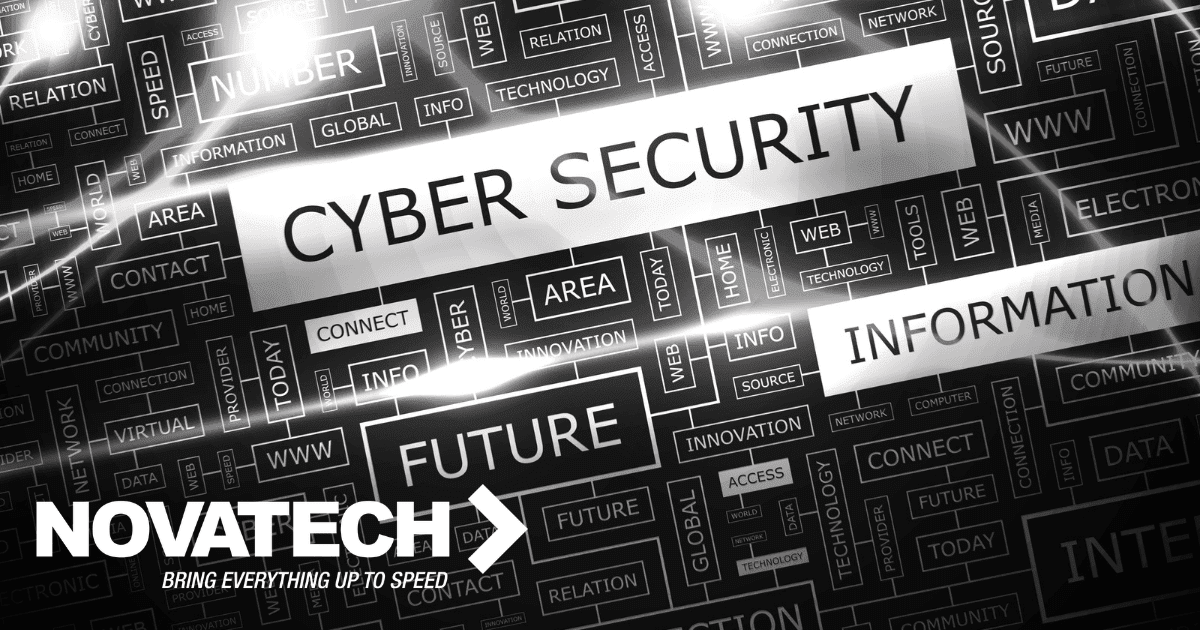What is Cybersecurity? The Top 25 Terms You Need to Know
4 min read

Cybersecurity is a critical, often overlooked component of a successfully managed office. One cyber-attack can tear an unsecured office apart, leading to breaches that can ruin an organization’s reputation and finances. Recent security breaches to Minted, Equifax, and even the U.S. Securities and Exchange Commission (SEC) illuminate the need to protect data, networks, and computer systems from cyber-attacks.
So, what is cybersecurity? Cybersecurity protects electronic devices, networks, and sensitive data from unauthorized access, piracy, or corruption. Cybersecurity’s protective measures include safeguarding systems from hacking, viruses, and more. It promises confidentiality, decency, and accessibility of information and systems to mitigate risks.
A cybersecurity measure can be as simple as setting strong passwords to as complex as implementing firewalls and encryption.
It only takes reading a cybersecurity article to realize that cybersecurity has its own vocabulary. To help with your cybersecurity navigation, our experts pulled together the top 25 terms used in the industry and their definitions.
- APT (Advanced Persistent Threat): A refined, long-term cyber-attack that permeates a network, often to take sensitive data.
- AV (Antivirus): Software intended to find, prevent, and erase malicious software from a computer or network.
- BYOD (Bring Your Own Device): A policy that permits employees to use their devices for work, which can introduce additional cybersecurity risks.
- CISO (Chief Information Security Officer): A senior-level executive responsible for creating and executing an organization’s information security strategy and policies.
- CVE (Common Vulnerabilities and Exposures): A public database of known security weaknesses in software and hardware.
- DDoS (Distributed Denial of Service): A cyberattack in which multiple compromised systems flood a target system with a high traffic volume, causing it to become overwhelmed and unable to work correctly.
- DMZ (Demilitarized Zone): A network sector that acts as a defense between a trusted internal network and an untrusted external network, like the Internet.
- EDR (Endpoint Detection and Response): A software solution shielding endpoints from possible threats. Endpoints include laptops, mobile devices, servers, and more.
- HIDS (Host-based Intrusion Detection System): A security solution that tracks and examines activity on individual devices for signs of intrusion or dangerous activity.
- IAM (Identity and Access Management): A structure for ensuring that the correct individuals have access to the appropriate tools at the right times and for the right reasons.
- IDS (Intrusion Detection System): A security solution that monitors networks for suspicious activity and potential weaknesses.
- IoT (Internet of Things): The interconnection of everyday devices and objects through the internet, which can introduce new cybersecurity risks.
- IPS (Intrusion Prevention System): A security solution that not only detects weaknesses but also takes action to prevent them from causing disruption.
- MFA (Multi-Factor Authentication): A security measure that requires users to provide two or more types of identification when logging into an account.
- NIST (National Institute of Standards and Technology): A U.S. government agency that develops and shares cybersecurity standards, guidelines, and best practices.
- PII (Personally Identifiable Information): Data used to identify, locate, or contact an individual, such as a name, address, or Social Security number.
- PKI (Public Key Infrastructure): A system for managing the development, distribution, and cancellation of digital certificates used to verify the identity of individuals and devices.
- SIEM (Security Information and Event Management): An array of tools and services that collect, examine, and report on security data from various places to help organizations identify and respond to weaknesses.
- SOC (Security Operations Center): A centralized team responsible for monitoring, finding, and responding to security incidents within an organization.
- SSL (Secure Sockets Layer): A security protocol that encrypts data transmitted between a web server and a user’s browser to ensure confidentiality and credibility.
- TFA (Two-Factor Authentication): A security measure that requires users to provide two types of identification (e.g., a password and a one-time code sent to their phone) when logging into an account.
- TLS (Transport Layer Security): An updated version of SSL, a security protocol that encrypts data transmitted between a web server and a user’s browser to ensure confidentiality and integrity.
- URL (Uniform Resource Locator): The address of a resource on the internet, such as a website, which cybercriminals can manipulate to lead users to dangerous sites.
- VPN (Virtual Private Network): A solution that provides enhanced security and confidentiality for online activities by encrypting internet traffic, routing it through a remote server, and masking the user’s IP address and location.
- XSS (Cross-Site Scripting): A type of security weakness that allows attackers to inject malicious scripts into web pages viewed by other users, potentially leading to stolen data or other dangerous consequences.
If the above terms leave you wondering where to start with cybersecurity, look no further than The Novatech Office X-Ray, which analyzes essential areas of your office environment, including cybersecurity. We begin with an overall Network Health Assessment, followed by Cybersecurity Threat Scoring.
Through our Cyber Threat Scoring process, we can uncover gaps and vulnerabilities in your overall network that could lead to cyber-attacks. We design a tailored solution to protect your business with proven technologies and industry best practices if we identify weaknesses.
Learn more about Novatech’s Managed Security offering today.


